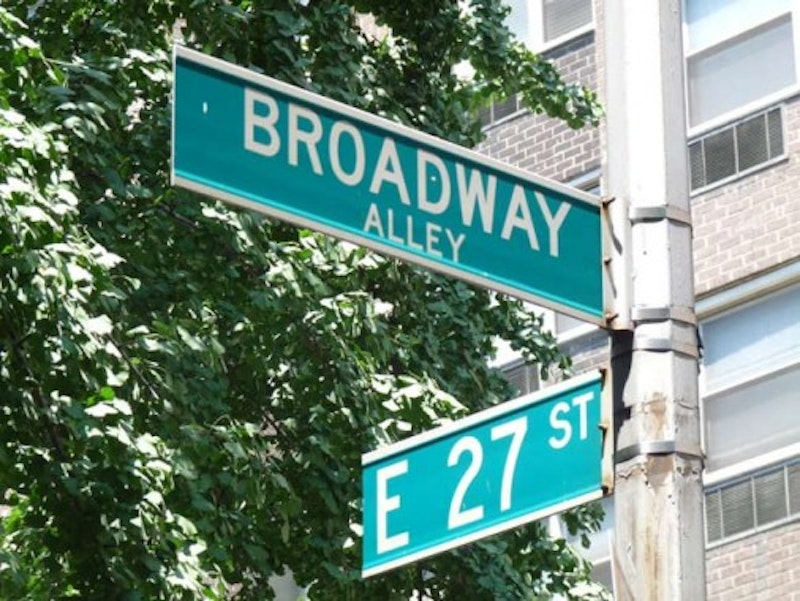Manhattan’s grid, first imposed in 1811, is remarkably rigid between 14th and 59th Streets, with very few interruptions from the system of north-south avenues and east-west streets. This is a situation unlike that of most Northeast cities, and indeed, many cities west of the Mississippi, when built on flat plains, also emulate the strict checkerboard system.
In older Northeast cities, or the oldest parts of those cities, the street system may follow a rough grid, but there are plenty of diagonals and meanderings. There is also a wealth of small alleys and dead-ends, used to enter the back doors of businesses, but also home to out-of-the-way dwellings. Unusually, NYC never developed many of these alleys, especially in Manhattan.

There are exceptions, such as Stuyvesant Street, between East 9th and 10th Streets and 2nd and 3rd Avenues, which used to be the driveway to the Stuyvesant family farmhouse when the area was completely rural, and Asser Levy Place on East 23rd Street—a cut-off former section of Avenue A. And then there’s Broadway Alley, between East 26th and 27th Streets, immediately west of 3rd Avenue. By some accounts, Broadway Alley was laid out as early as the 1830s as a break between surrounding buildings.

By 1909, mapmakers began showing the name “Broadway Alley.” (Note the individual dwellings shown on the east side of the alley; today just one remains.)
Broadway Alley is approximately five blocks east of the actual Broadway, which is the longest street in Manhattan and the Bronx. There is speculation that along the way, it acquired the name because local property owners wanted to impart a gay (in the "upbeat" sense of the word) theatrical aura to the place. However, as you might expect, in its almost two-century history it has been home to prostitution and crime. It was once lined on its east side with stables and tenement houses. A story holds that the Barnum and Bailey Circus had kept their elephants in the alley at one time.
Virtually all of that colorful history has been bleached out by time, though. Let’s see what we have…

Of the tenements that used to line the east side of the alley, only one, #8, remains. Presumably #2, 4, 6 have been lost to time. In 2012, #8 was home to The William Morrison Communications Agency.

About halfway down the alley going south, the pavement cuts off and the remainder is dirt road, with concrete chips and the occasional weed. There are some signs of remaining Belgian block pavement, and the alley likely once had those along its whole length. A metal fence with barbed wire protects 3rd Avenue businesses from any miscreants tempted to break-in. The rears of some 3rd Avenue buildings extend all the way to the alley, but #8 is the only building that faces Broadway Alley.

Looking north from East 26th, a chain link fence has been installed to keep out the curious.
My favorite feature over the years has been the Type G wall bracket lamp placed diagonally at East 26th Street and the alley. Oddly, it doesn’t seem meant to illuminate the alley itself, but merely to call attention to it. It has likely been here since the 1910s, and has used a variety of luminaires using incandescent and mercury up to the yellowish-light sodium of today. I’d love to see a photo of this from previous decades to see what kind of lights were affixed to the pole.
Unfortunately, it appears to be in desparate need of a paint job or rust will claim it.

